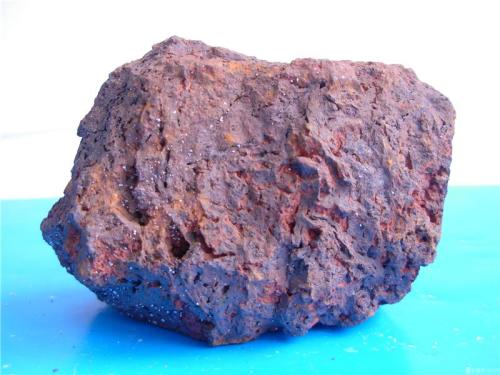 According to recent reports, the domestic iron ore market remains stable with moderate trading volumes. As external markets stabilize, the spot price of imported iron ore has seen a slight rebound, leading to increased transaction activity. Despite this, the domestic market has remained relatively quiet, with some traders regaining confidence. Prices for major mines remain firm, but overall turnover is still sluggish.
In Hebei, the iron ore fines market is steady, with most merchants gradually easing their concerns, though demand for steel products remains low. The iron concentrate market in North China is also stable, with an uptick in inquiries. In the Northeast region, the iron ore fines market is stable, but transactions are still weak. In East China, the market remains steady, and some mines have reported improved shipping conditions. Some areas show early signs of recovery.
In Central and Southern China, the iron ore fines market remains weak, with limited availability of resources. Some mines have refused to accept price adjustments proposed by steel mills.
The imported iron ore market has seen a slight increase in activity, with average transaction levels. On the global front, prices have shown narrow fluctuations, and demand remains light. Major mining companies did not issue tenders, and trading platforms were quiet yesterday. According to trader feedback, PB powder was quoted at $140 per tonne, but steel mills showed less interest compared to previous days.
On the spot market, port prices are stronger than the broader market. Due to limited supply, some large investors have raised their bids to ease cost pressures. However, buyers have not yet accepted the new prices decisively, resulting in a slight drop in transaction volumes. The short-term rebound has lasted nearly a week.
Looking ahead, with potential mine expansions expected in the second half of the year and stricter environmental regulations in northern regions, the market outlook may soon face a critical decision point. Investors are closely watching for any directional shifts in the coming weeks.
According to recent reports, the domestic iron ore market remains stable with moderate trading volumes. As external markets stabilize, the spot price of imported iron ore has seen a slight rebound, leading to increased transaction activity. Despite this, the domestic market has remained relatively quiet, with some traders regaining confidence. Prices for major mines remain firm, but overall turnover is still sluggish.
In Hebei, the iron ore fines market is steady, with most merchants gradually easing their concerns, though demand for steel products remains low. The iron concentrate market in North China is also stable, with an uptick in inquiries. In the Northeast region, the iron ore fines market is stable, but transactions are still weak. In East China, the market remains steady, and some mines have reported improved shipping conditions. Some areas show early signs of recovery.
In Central and Southern China, the iron ore fines market remains weak, with limited availability of resources. Some mines have refused to accept price adjustments proposed by steel mills.
The imported iron ore market has seen a slight increase in activity, with average transaction levels. On the global front, prices have shown narrow fluctuations, and demand remains light. Major mining companies did not issue tenders, and trading platforms were quiet yesterday. According to trader feedback, PB powder was quoted at $140 per tonne, but steel mills showed less interest compared to previous days.
On the spot market, port prices are stronger than the broader market. Due to limited supply, some large investors have raised their bids to ease cost pressures. However, buyers have not yet accepted the new prices decisively, resulting in a slight drop in transaction volumes. The short-term rebound has lasted nearly a week.
Looking ahead, with potential mine expansions expected in the second half of the year and stricter environmental regulations in northern regions, the market outlook may soon face a critical decision point. Investors are closely watching for any directional shifts in the coming weeks.Pulsed laser ranging module is a module that uses pulsed laser technology to measure distance. It emits a series of pulsed laser beams and calculates the distance between the target object and the module by measuring the round-trip time of the laser beams.PTFS has high ranging accuracy and long ranging range, strong anti-jamming ability, support for secondary development, a large number of ranges, safe for the human eye 905 nm, customizable frequency (20-3500 Hz), available for both indoor and outdoor. It can be widely used in speed measurement, displacement measurement, distance measurement and other fields.
Pulse Long-range laser distance sensors can measure distances of hundreds of meters to several kilometers, suitable for wide-area measurement and long-distance monitoring. These sensors are crucial in fields like surveying, Geographic Information Systems (GIS), mining, and drone mapping. For instance, in drone mapping, long-range laser distance sensors quickly acquire extensive terrain data, supporting the creation and updating of GIS.
high frequency laser sensor, long range laser distance sensor, high frequency laser ranging finder module, high speed laser measuring sensor
CHENGDU MESKERNEL INTEGRATED TECHNOLOGY CO.,LTD , https://www.meskernel.com
![<?echo $_SERVER['SERVER_NAME'];?>](/template/twentyseventeen/skin/images/header.jpg)